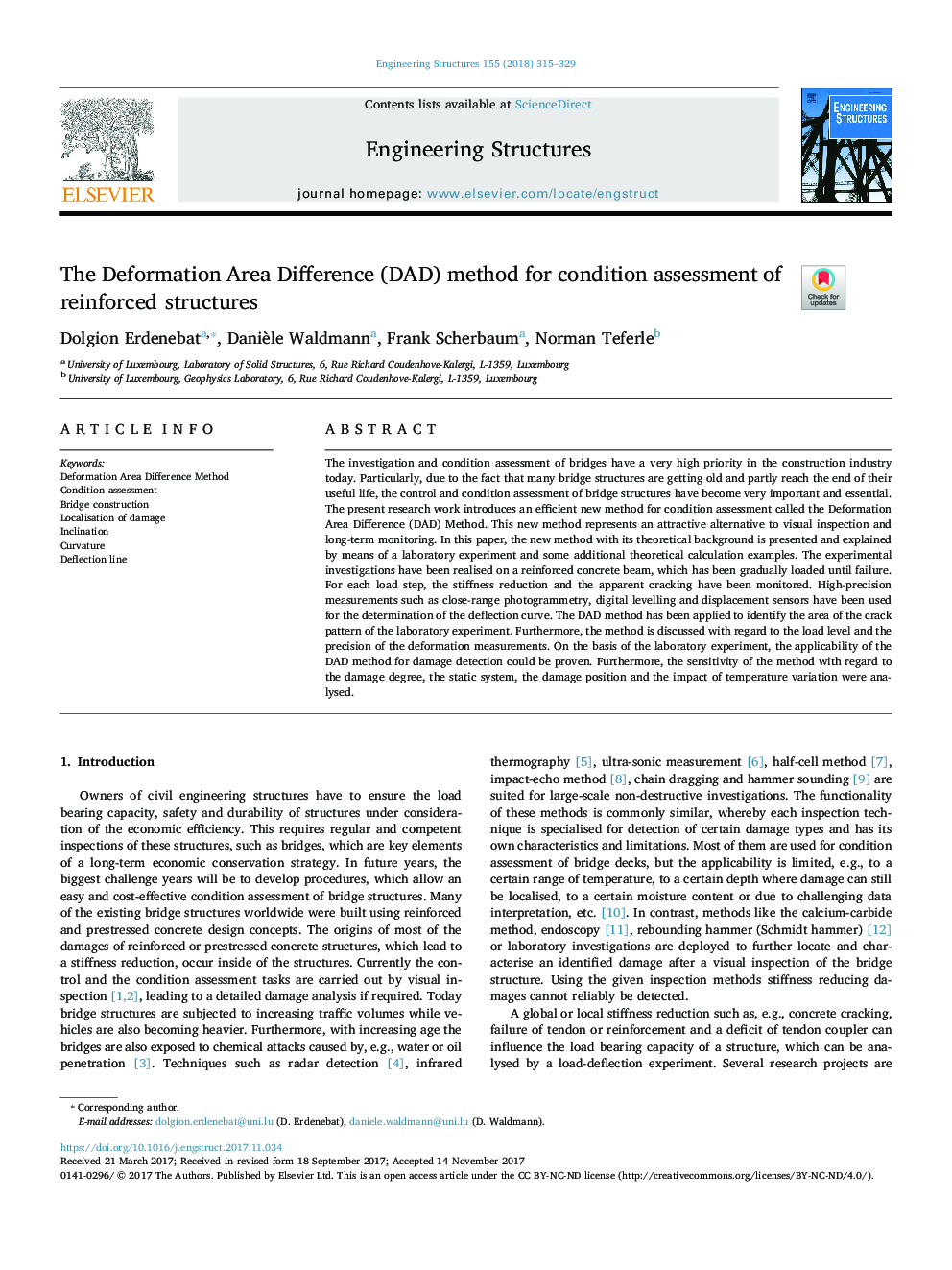| Article ID | Journal | Published Year | Pages | File Type |
|---|---|---|---|---|
| 6739114 | Engineering Structures | 2018 | 15 Pages |
Abstract
The investigation and condition assessment of bridges have a very high priority in the construction industry today. Particularly, due to the fact that many bridge structures are getting old and partly reach the end of their useful life, the control and condition assessment of bridge structures have become very important and essential. The present research work introduces an efficient new method for condition assessment called the Deformation Area Difference (DAD) Method. This new method represents an attractive alternative to visual inspection and long-term monitoring. In this paper, the new method with its theoretical background is presented and explained by means of a laboratory experiment and some additional theoretical calculation examples. The experimental investigations have been realised on a reinforced concrete beam, which has been gradually loaded until failure. For each load step, the stiffness reduction and the apparent cracking have been monitored. High-precision measurements such as close-range photogrammetry, digital levelling and displacement sensors have been used for the determination of the deflection curve. The DAD method has been applied to identify the area of the crack pattern of the laboratory experiment. Furthermore, the method is discussed with regard to the load level and the precision of the deformation measurements. On the basis of the laboratory experiment, the applicability of the DAD method for damage detection could be proven. Furthermore, the sensitivity of the method with regard to the damage degree, the static system, the damage position and the impact of temperature variation were analysed.
Related Topics
Physical Sciences and Engineering
Earth and Planetary Sciences
Geotechnical Engineering and Engineering Geology
Authors
Dolgion Erdenebat, Danièle Waldmann, Frank Scherbaum, Norman Teferle,
